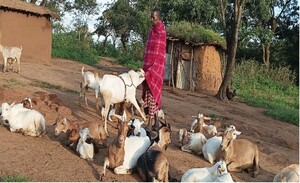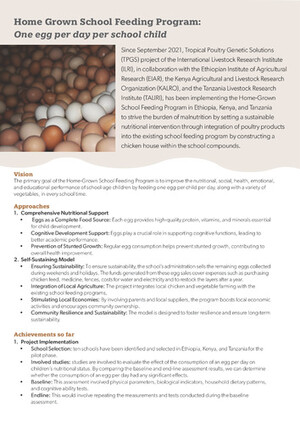
Purebreeding of Red Maasai and crossbreeding with Dorper sheep in different environments in Kenya
Abstract
The aim of this article was to study opportunities for improvement of the indigenous and threatened Red Maasai sheep (RM) in Kenya, by comparing purebreeding with crossbreeding with Dorper sheep (D) as a terminal breed, in two different environments (Env. A and a harsher Env. B), assuming different levels of genotype-by-environment interaction (G × E). Breeding goals differed between environments and breeds. Four scenarios of nucleus breeding schemes were stochastically simulated, with the nucleus in Env. A. Overall, results showed an increase in carcass weight produced per ewe by more than 10% over 15 years. Genetic gain in carcass weight was 0.17 genetic SD/year (0.2 kg/year) across scenarios for RM in the less harsh Env. A. For survival and milk yield, the gain was lower (0.04–0.05 genetic SD/year). With stronger G × E, the gain in the commercial tier for RM in the harsher Env. B became increasingly lower. Selection of females also within the commercial tier gave slightly higher genetic gain. The scenario with purebreeding of RM and a subnucleus in Env. B gave the highest total income and quantity of meat. However, quantity of meat in Env. A increased slightly from having crossbreeding with D, whereas that in Env. B decreased. A simple and well-designed nucleus breeding programme would increase the genetic potential of RM. Crossbreeding of RM with D is not recommended for harsh environmental conditions due to the large breed differences expected in that environment.
Citation
Zonabend Konig, E., Strandberg, E., Ojango, J.M.K., Mirkena, T., Okeya, A.M. and Philipsson, J. 2017. Purebreeding of Red Maasai and crossbreeding with Dorper sheep in different environments in Kenya. Journal of Animal Breeding and Genetics 134(6):531–544.










